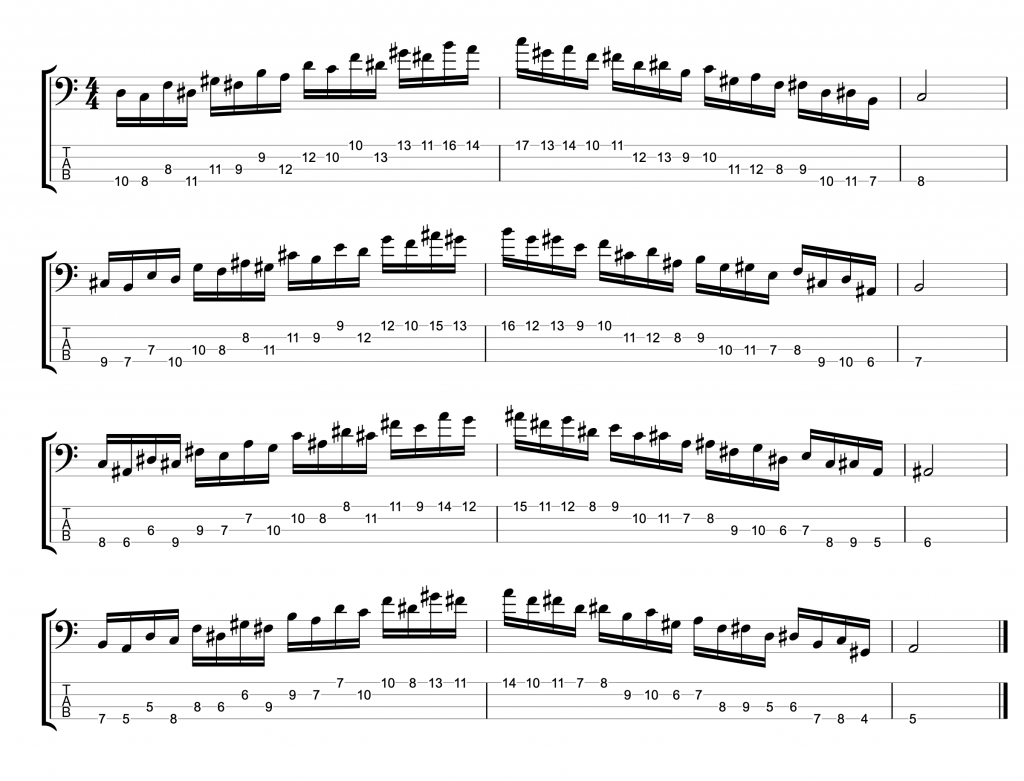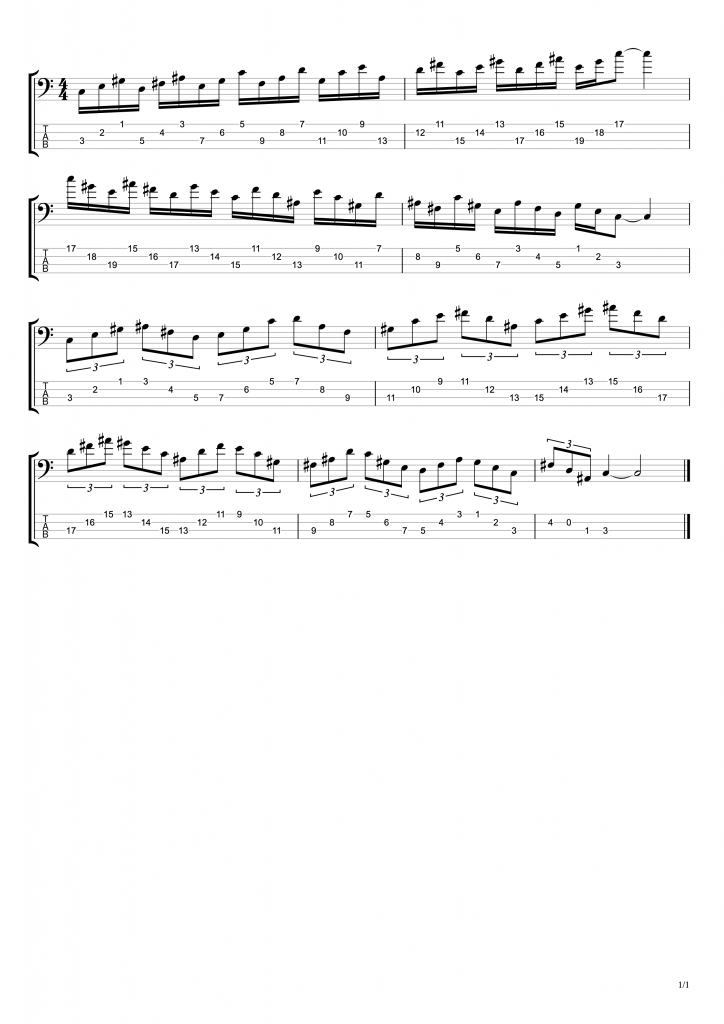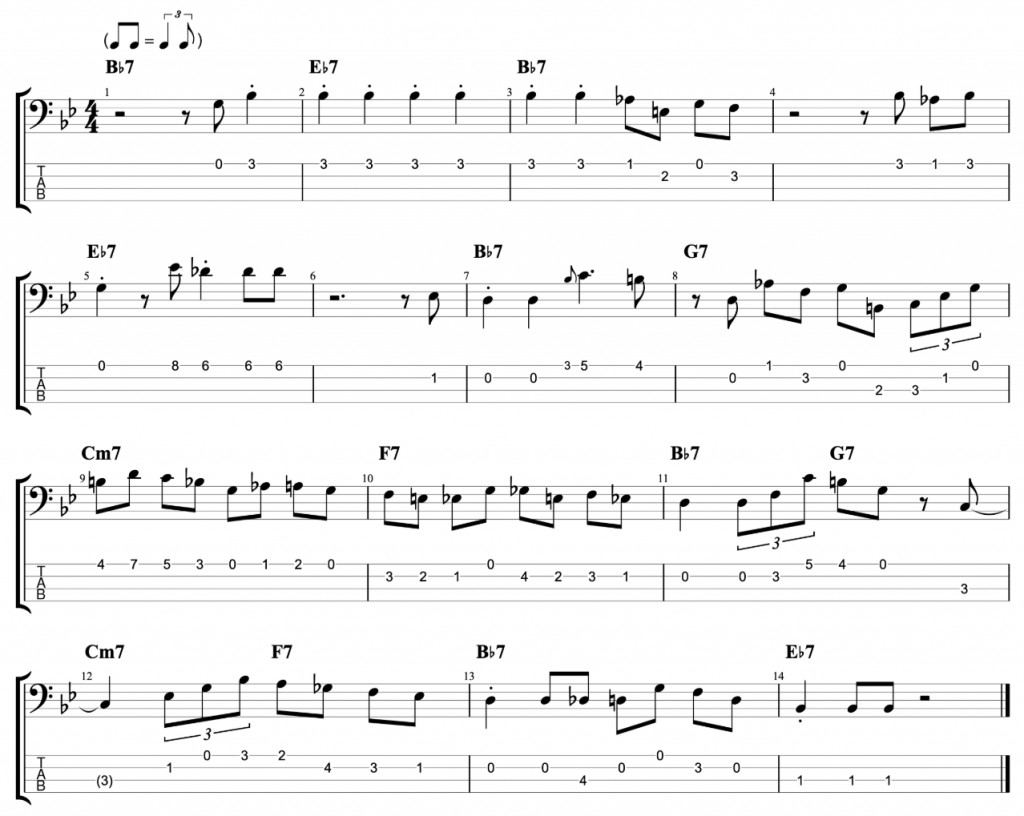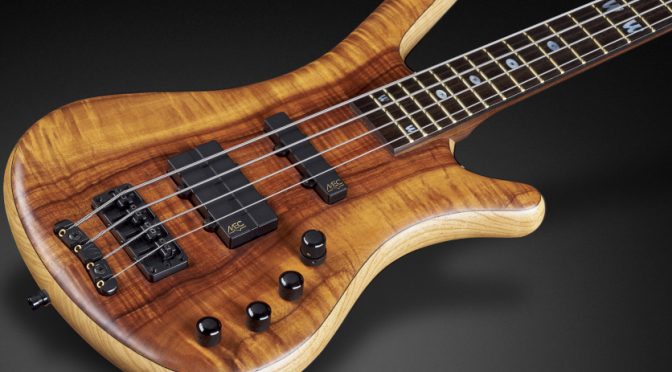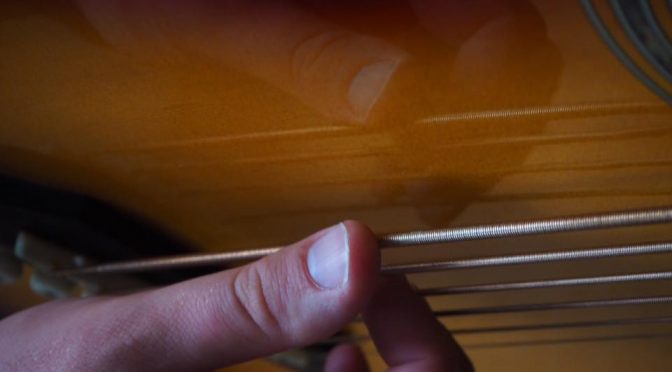Diminished Scale Exercise for Jazz Lines – Bass Practice Diary – 6th August 2019
Recently I’ve been practicing lots of symmetrical exercises. And this week I’ve featured a diminished scale exercise that I came up with this week. A few weeks ago I featured an exercise that involved harmonising the whole tone scale into augmented triads. A symmetrical exercise can be anything with a limited number of transpositions. In practice that usually means using patterns of repeating intervals. They have a vey unique sound that you won’t achieve just by using major and minor scales and their modes.
The Diminished Scale in Jazz
I’ve spoken a bit in the past about the diminished scale in jazz. The diminished scale is probably the most versatile symmetrical scale. The most obvious time to use it would be over a diminished chord, but that isn’t the most common place it gets used in jazz. The most common use of diminished scales in jazz is on dominant 7th chords. And I’ve used dominant 7th chords as the backing for the exercise in the video. The chords go around in a cycle of 5ths like the middle 8 section of the Rhythm Changes chord progression (D7, G7, C7, F7).
Let me explain how and why diminished scales work on dominant chords. I’ll use C7 as an example and I’m going to start my scale on the root note C. The first intervals in the scale will be a semi-tone and then a tone. So, the first three notes are C(root), Db(b9) and D#(#9). These same intervals will then repeat through the octave creating a scale with eight notes in it, C-Db-D#-E-F#-G-A-Bb.
The interval pattern this creates is an interesting mix of inside and outside notes when played on a C7 chord. The b9 and #9 are both outside notes, and both common alterations on dominant 7th chords. The C, E, G and Bb are the chord tones, root, 3rd, 5th and 7th. And the A is the 13th, which is a chord extension but an inside note. The F# is a #11th, which is another common altered chord extension.
The Diminished Scale Exercise
The exercise I came up with in the video is just an idea to help you improvise lines using the diminished scale. It’s slightly different ascending and descending as I referred to in the video. Here is the exercise as I played it in the video.
